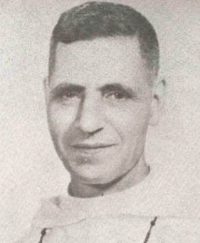I left for Northern Luzon. Filipino policemen, by order of Japanese officials, meticulously checked all our luggages for arms and subversive documents. There has been a lot of smuggling of rifles and pistols these past weeks, and the guerilla activities were increasing, so that the Japanese have to keep a closer watch.
The trip by train was not as fast and convenient as in prewar days. Everybody had to travel by third class, sitting on hard benches, if there are any available. The first class coaches are reserved for the Japanese who threw out by force their Asian brother who attempted to occupy their cushioned seat. These Asian brothers were for the most part standing on the aisles or piled up between luggages and crates. In these days, the elegant, dandy and imperturbable share seats with the buyo-chewing common folk.
The fields offer nothing of interest to the sight of the inconvenienced train passengers. Central Luzon is hardly planted with sugarcane. There is more of rice, but most of the fields have been left uncultivated, especially in Pampanga, the province most pillaged by bandits. In Tarlac, some fields are planted with cotton, a new breed introduced by the Japanese. It is not known what results this crop would yield in this uncertain climate. Certainly, the appearances are not encouraging.
